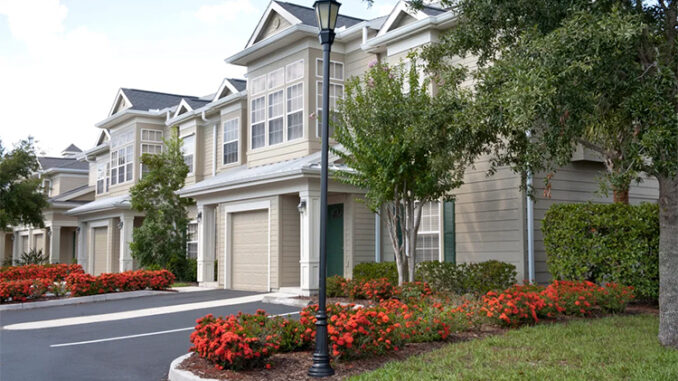
By Anna Caballero
California faces a housing crisis and a climate emergency. We don’t build enough housing so we drive too frequently and too far in cars that generate most of California’s greenhouse gases.
The solution is simple and obvious: build more housing in cities where people work so we don’t have to drive so much.
Local governments need to partner with the state and private developers to reduce building costs, which reduces housing prices. Start with making it easy to build compactly in cities where housing should go. Compact housing not only reduces vehicle miles traveled, it is less expensive because it lowers land costs per unit and improves “economies of scale” in construction.
Lowering housing costs starts with increasing housing supply. California is now 49th in the country in housing production per capita. We build fewer homes annually than we did in the 1960s.
How did we get here? The root causes are old infrastructure, conflicting laws and misaligned incentives that drive up both housing costs and emissions. Proposition 13 incentivizes local zoning less for homes and more for commercial to generate taxes. California local governments have virtual free reign over zoning, putting the interests of current residents before those of future ones.
Consequently, housing in California is costly and financially risky to build, so developers can’t and don’t – and private developers build essentially all of California’s housing.
With limited housing production, housing prices have soared, making it virtually impossible for average wage earners and young people to enter the housing market. Low wage earners end up sharing homes or moving.
Competing interests restrict supply and drive up housing costs to unprecedented levels. Local governments fiercely protect control over zoning. Neighborhood groups protect status quo zoning. Construction unions want set wages, regardless of regional markets. Social justice groups, too long excluded from the housing market, understandably argue that market rate housing must subsidize affordable housing and not displace low income residents.
California can increase housing supply within the boundaries of our 482 cities. There’s no need for sprawl in unincorporated areas. And housing needs to be reimagined to be “affordable by design”– more units in larger buildings, especially for-rent apartments and for-purchase condominiums and townhomes. The state should require local governments to approve and build more housing, use land more efficiently and simplify permitting.
That is why state Sen. Anna Caballero, a Democrat from Salinas, authored Senate Bill 6 this year, the Neighborhood Homes Act. It makes it easier for local jurisdictions to approve residential development in commercial office and retail spaces. Communities are increasingly familiar with distressed malls plagued by vacancies. These commercial and transportation centers are ripe for new residential development.
The state should also include mandates for approval of duplexes and lot splits in residential neighborhoods and approval via “ministerial” procedures, based on objective standards. The city of Sacramento has led by allowing four-plexes by right. Other regulations also should be relaxed, including height, setback and parking requirements.
Building in cities should be as profitable as building on virgin land. One of the biggest impediments developers face is old infrastructure – sewer, water and gas lines and electric utilities that won’t support higher densities. Cities that have zoned their downtowns for higher density should be rewarded with infrastructure improvement bonds. We need incentives that encourage developers to build more affordable housing in cities – incentives like density bonuses, to allow more units if a percentage is reserved for low-income wage earners.
If California is to meet our goals for equitable greenhouse gas reduction, adapting to climate change, and building homes for all, it’s time to break down the local barriers that have favored building out rather than building up. California’s Legislature is where that needs to happen. And it can’t happen soon enough.



Be the first to comment